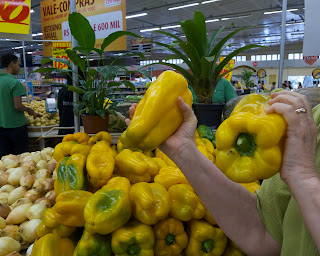Fifty years ago most Americans had little knowledge about Brazil. When I was called to go there, my family had to get out our Atlas to find it. It was an unknown, but probably dangerous and scary place and certainly not one of the world’s best places to visit. Now, we know much more but that knowledge is focused thinly on Rio - isn’t there a movie about that - and what about Carnival - isn’t that just like Mardi Gras - and the Amazon - still a dangerous place - and most know that it is down there in South America. Some people have visited there but out of a hundred people you might meet, you probably would not find one. Now, isn’t the Olympics going to be down there in Brazil?
People live here in Brasil (that is not a spelling error - it is the correct spelling here). The people don’t speak Spanish, they speak Portuguese. They are real people and if you get away from the tourist areas, you will find them living with hopes, dreams, challenges, progress, families, schools, cities, hospitals, governments, farms, stores, houses, cars, motorcycles, trains, buses, airlines and they are friendly, warm and caring people. If you could speak their language, you would soon have lots of friends here. (Click on the Photo for Stunning Detail)
 |
| Grandfather Inspiring Grandson in the Garden |
In my occasional walks I observe and sometimes meet real people. Here is a grandfather and his grandson. As I passed by he was teaching his grandson how to harvest the lettuce while leaving most of the soil there. This is the front yard. It is functional, beautiful, and a place of peace for this family. In the picture you can’t see the ornate fence that secures this home because the photo was taken with my Panasonic Lumix DMC-LX5 camera which easily fit between the iron rods. Perhaps you might consider the tall drab grey wall as being ugly but not to them. It represents security and privacy. You might notice the tomato plants beginning to produce but you would not recognize the plants at the foot of the wall as being edible. They are and are used extensively here in many recipes.
Above the carport roof you see what looks like an unfinished part of the house. It is not. It is a large open air area used for family gatherings. Usually it has cooking facilities there in addition to the kitchen down in the house. It is cool in the summer and usable year round. You see the driveway which is always clean and washed down. You see roses and some towels hanging out to dry. This is a happy place in a troubled world.
I asked the grandfather if I could take this picture. At first he did not understand why anyone would want to do that but then he gave me permission. As I showed them the resulting picture on the camera, they smiled and were pleased with the result. He is a happy man and loves this grandson.






